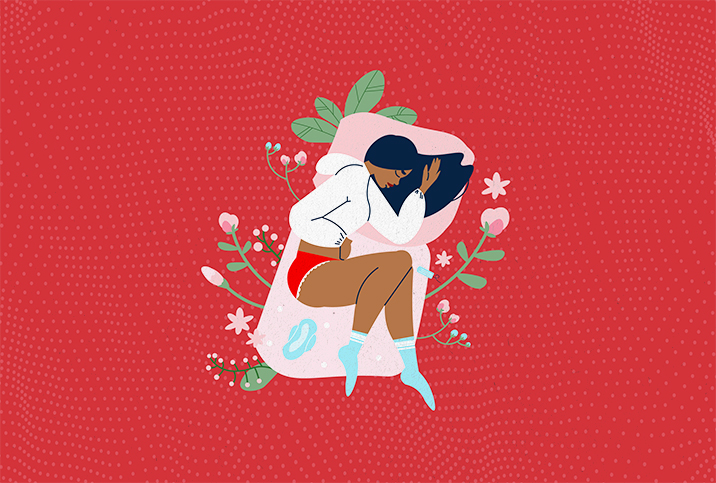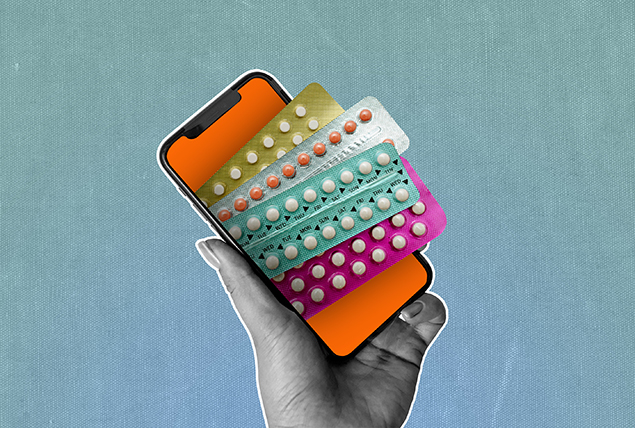What Is Primary Dysmenorrhea in Teenagers?

Cramps when you’re menstruating are normal, but only to a certain extent. If your period pain is so severe that you’re missing classes or it’s preventing you from living your best life, you may be experiencing dysmenorrhea.
We spoke to experts about what primary dysmenorrhea is, how it’s treated and the impact it can have on your teenage years (which is why it's so important to see a doctor for help).
What is primary dysmenorrhea?
Dysmenorrhea is the medical name for the pain you get during your period, whether it be subtle cramps or intense, debilitating pain. Primary dysmenorrhea is different.
"Dysmenorrhea means pain with periods. Primary dysmenorrhea is period pain, which is not due to any particular health condition. The pain usually begins when your period comes but might start slightly before," said Hana Patel, MBBS, BSc, general clinical practitioner and honorary lecturer at the University of Kent. "The main symptom of this is cramps or achy pain in the abdomen. You may also feel it in your lower back or the top of your legs."
With period-related pain, it can be hard to tell what’s normal and what’s not. But, symptoms and signs indicate a trip to the doctor should be in order. The symptoms are as follows, according to Melanie Bone, a Florida-based OB-GYN and medical board member at Daye.
These include:
- Severe pain that's interfering with your daily activities, such as schoolwork or sports
- Nausea, vomiting or fever
- History of pelvic inflammatory disease (PIDS)
- Symptoms similar to those of endometriosis, adenomyosis or uterine fibroids
- Pain persists or worsens over time
- Irregular periods or bleeding between periods
If you experience irregular periods or bleeding between your periods, it could be a symptom of gynecological cancers, Bone said.
Primary dysmenorrhea is actually caused by natural chemicals called prostaglandins, which are made in the lining of the uterus. Prostaglandins cause the muscles and vessels in the uterus to contract.
The uterine contractions cause the cramp-like pain you may have experienced. The levels of prostaglandins tend to be higher on the first and second days of your period, which is why the pain may be worse during the first few days.
How is primary dysmenorrhea treated in teenagers?
You may be wondering how it’s possible to treat something that isn’t really associated with any specific health condition. But there are different treatment options available.
"Primary dysmenorrhea is most commonly treated with over-the-counter pain medications such as ibuprofen, naproxen, or acetaminophen. Keep in mind that using these monthly can result in disruptions to your digestive function, as well as other clinically significant side effects," Bone shared.
There are other options.
"Nonsteroidal antiinflammatory drugs (NSAIDs), such as ibuprofen and naproxen, can sometimes cause an upset stomach and are not designed to be taken 2-3 times per day for more than a few days. They work best when started a day or two before a person’s period begins," Bone said.
Other methods for helping to reduce pain during the menstrual cycle include hormonal birth control options such as:
- Oral contraceptives
- Birth control patch
- Vaginal ring contraceptive
- Intrauterine device (IUD)
"Unfortunately, some individuals have side effects from hormonal contraceptives, which makes them a less-than-optimal choice for them," Bone said.
There are other ways to help potentially reduce menstrual cramping naturally.
"You can also try using a heating pad or taking a warm bath to relieve the pain. Regular exercise and a healthy diet may also help reduce menstrual pain. There is significant evidence that cannabidiol (CBD), particularly when taken vaginally, can reduce period pain," Bone suggested.
What is the impact of primary dysmenorrhea on teenagers?
Struggling with primary dysmenorrhea at a young age can have a significant impact on the teenage years. It is, unfortunately, not an uncommon health condition.
The estimated prevalence of primary dysmenorrhea in teenagers is somewhere between 16 and 93 percent, with severe pain perceived to affect between 2 to 29 percent of adolescent girls, suggested a 2015 study.
A primary finding of this study, and others, indicate that severe menstrual pain is often associated with absenteeism from school or work. There's an estimated 33 to 50 percent of teenagers who have had to miss school at least one day a week during their cycle.
Whilst research surrounding primary dysmenorrhea in teenagers has increased in recent years, the overall lack of understanding surrounding the condition stems from deeply rooted myths and stigmas surrounding menstruation.
The bottom line
There’s no doubt that primary dysmenorrhea can be debilitating for teenagers and significantly decrease their quality of life. It’s important to understand what’s considered normal and abnormal when it comes to your menstrual cycle so you can get the support you may need. Speak with your doctor to learn more.


















